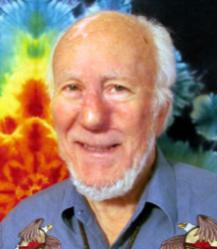Science is good. We owe much of the advancement of the human race over the years to the scientific process.
That being said, should you study your dreams like a scientist?
Or should you study your dreams in some other way?
If not, then like what?
What do you want to do with your life?
It depends on what you want to accomplish.
An entrepreneur could study their dreams for business ideas (problems they can solve for money) and for ways of executing their plans.
Artists of all types can study them for inspiration.
How you should look at your dreams, how you study them, depends on what problems you need to solve and what you need to do in order to live your best life possible.
Studying their dreams can benefit anyone.
Anyone of any age can use dreams to resolve personal conflicts and gain clarity about what they need to do to feel and be successful.
Science vs. what?
A scientist and an individual have similarities and differences in how they’d study dreams.
Broadly speaking, a scientist looks for patterns in dreams. They apply these patterns across a wide group of people.
The individual, on the other hand, takes the characters and stories in their dreams and seeks to understand their life.
Individuals have patterns to consider too.
Dreams have manifest or objective content and latent content.
Manifest content is what the dream is (objectively) about.
The latent content is what the dream is really about.
The work of the scientist can benefit the individual in helping the individual understand how alike or how different they are from everyone else.
Further, the scientist’s work can clear up questions for the individual as well.
Yet, the scientist’s work is built on the work of many individuals, as dreams are collected and analyzed and individuals are tested.
The individual and the scientist’s goals are different for the study of their dreams.
If you’re a writer, study your dreams like a writer.
If you’re a mother, study them like a mother.
If you’re the manager of an intensive care unit, study them as one of those would.
Who is Calvin S. Hall?
Calvin S. Hall (1909-1985) was an American psychologist. Hall’s picture is at the top of this article. He studied dreams and how they related to sleep. He was known for developing a system of dream classification based on themes and imagery. The system he developed in conjunction with others is still used today to categorize and analyze the content of dreams. The system gives a good framework for considering how a scientist might study dreams.
What is the Hall/Van de Castle System?
Dreams can deal with sensitive information that people can find embarrassing. Further, they’re stories. Stories can be difficult to compare.
His answer was to translate the dreams into code.
The system is known as the Hall/Van de Castle System. Elements of a dream are categorized into content areas including characters, social interactions, settings, objects, actions, and emotions.
Hall and Robert Van de Castle assigned numerical codes to each content area, and further, to subcategories within the content area.
For example, the content area of “emotion” was subcategorized into “happy” and “sad” and other things.
Once the codes were given numbers, one could analyze them for patterns to identify common themes or motifs.
The first group was obtained from 71 students in a daily class. During the first 10 minutes of class, they wrote down any dreams they might have had the previous night.
For a second group of 75 students, they were given a notebook. They were to write their dreams down as soon as it was convenient upon wakening.
They felt that for the purpose of the study, it was better to record the dreams in class. The conditions were more controlled.
From there, in both groups, the dreams were translated onto a form from where they were coded so the dreams could be compared and contrasted.
Differences between dreams for science and individual use
You’re not going to need to translate your dreams into code if you want to understand them.
Further, you’re not going to need to compare your dreams to others. Of course, your dreams are going to be different than other people’s. They’re having a different life than you with different experiences.
Rather, you’re going to need to approach your dreams differently.
First, you’re going to want to sleep well.
Then you’re going to need to keep something handy on which to write your dreams as soon as you practically can after waking up.
Then you’re going to need to be able to recall your dreams as well as you can.
The scientist is going to study dreams for what is generally true among a population of people.
The individual can study their dreams to get closure about a particular situation, to understand where they are in their life, and for creative inspiration. Dreams can help the individual grow.
The scientist and the regular individual shouldn’t study dreams in the same way, though the individual can become more acquainted as to what is and isn’t usual when it comes to them and other people by reading about the work of the scientists.
Can scientists tell everything about their subjects from their dreams?
If the scientist had a subject who showed psi abilities, they might not be able to pick it out, unless they asked about it specifically.
How are they supposed to know everything that the subject knows?

That doesn’t mean they’d be altogether without insight into the person. Their insight would come from a different direction, however.
Hall’s partner, Van de Castle, must have noticed instances of this kind in his dream research.
Among other aspects of extra-sensory perception, Van de Castle studied dream telepathy.
In one study, study participants slept in a sleep laboratory while connected to an EEG machine. This enabled researchers to see when the participants entered each sleep cycle phase.
When they were in the fourth or fifth cycle someone in a different room gazed at a picture and tried to telepathically send it to the dreamer until the dreaming cycles were finished.
The dreamer was then awoken and asked to describe any dreams they had. They were also shown a pool of eight pictures from which the target picture was selected and asked to rank them according to how closely they matched the transmitted picture.
None of the subjects could telepathically pick up the broadcasted picture reliably, though Van de Castle was able to select the correct picture on five out of seven nights, far exceeding the probability of mere chance.
Reference:
Hall, C. S. (1947). Diagnosing personality by the analysis of dreams. The Journal of Abnormal and Social Psychology, 42, 68-79.
Also on the blog:
James Cobb RN, MSN, is an emergency department nurse and the founder of the Dream Recovery System. His goal is to provide his readers with simple, actionable ways to improve their health and maximize their quality of life.
We use some affiliate links. If you click on a link and make a purchase, we may receive a commission. This has no effect on our opinions.
